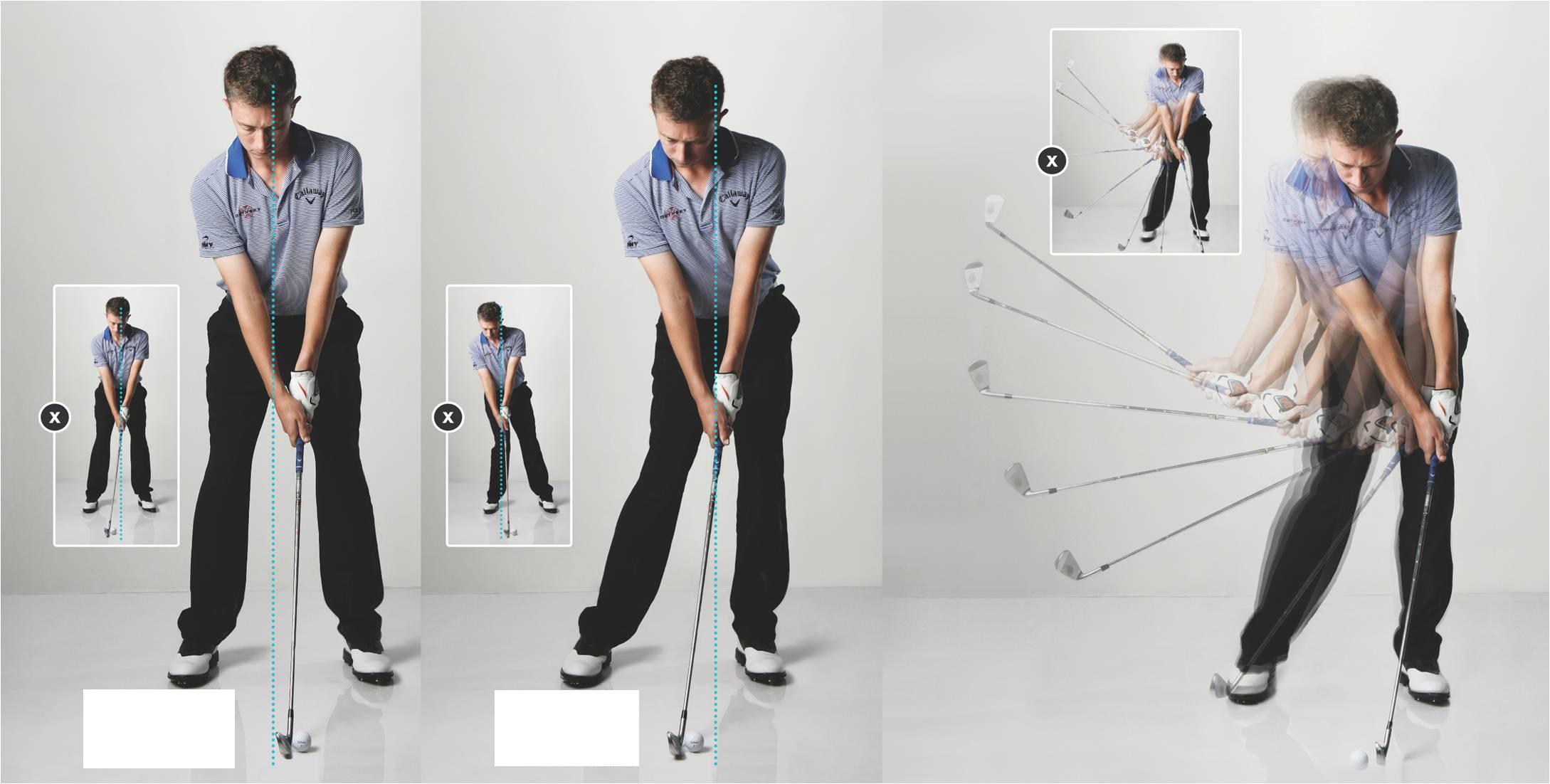Scooping
Scooping at impact
Scooping is one of the most common swing faults with amateur golfers. The left wrist breaks down, increasing the loft, with the weight hanging back on the right foot. This will lead to heavy shots, thin shots and a loss of distance. If you can understand 3 laws of impact, you will be a long way to fixing this problem and really improving your ball striking.
1) Where the low point is at impact
2) Ball position & Body position
3) Hand acceleration
Low point at impact
Not that thinking about numbers during a swing has ever helped anyone play better, but having the understanding that actually the lowest point in the swing should be 4 inches after the ball will really help you when we go to work on improving your impact position.
Ball position & Body position
Basically, the swing is the club moving around your body in a circular motion and your centre of body is the centre of that circular motion. The bottom of that circle is the lowest place in the swing, which as we know should be 4 inches after the ball. So for a player to create a solid impact, with the bottom of the circle in the right place, the centre of the body needs to be moving left of the ball at impact.
Ball position – Many will be thinking, it’s simple, just put the ball 4 inches behind the centre of your body at address. However, you must consider that any swing which is dynamic and creates speed at impact must have a weight shift from the right side in the backswing to the left side in the downswing, meaning the centre of your body and the bottom of your swing will also move left. Having the ball towards the left in the stance, left of the centre of your body, will encourage you to transfer you weight correctly to your left side.
Fault
Moving the ball to the right in the stance will encourage you to keep your weight on your right foot and release the club early to move the bottom of the swing to the right. So opposite of what many think, moving the ball to the right will create more heavy shots and a higher ball flight.
Hand Acceleration
This is a key point in creating a solid impact position; your hands must keep accelerating passed impact. If your hands keep accelerating pass impact, the club head will stay behind your hands, so the club shaft is leaning slightly forward at impact, creating that descending strike. With the club shaft leaning forward at impact, the low point in the swing will move left, so it is another reason why the ball must be positioned left of the centre of your stance. You simply cannot transfer your weight to the left side and keep your hands accelerating if your ball is positioned to the right in the stance.
Fault
I have never seen anyone create a descending strike with their hands decelerating at impact; the hands slowing down will always result in the club going past the hands and the left wrist breaking down, scooping the ball.
Exercise
- Place a piece of white tape on the mat.
- Take your set up, with the piece of tape in the same position as the ball would be – positioned left of the centre of your stance.
- Starting with a wedge, make small swings, focusing on hitting the mat 4 inches after the tape. DO NOT TOUCH THE TAPE.
- To do this, you should feel you weight starting to transfer to the left in your downswing, and to hit the ground after the tape, your hands must keep accelerating pass the tape line.
Tip – In your mind, create a target point for your hands left of the line. Focus on keeping your hands accelerating to this point and reaching this point before your club head reaches impact.

Something to understand
I know what normally happens is when someone moves the ball to the left in their stance for the first time, they hit more topping or heavy shots. This is because years of playing the ball to the right in the stance has created no weight transfer or hand acceleration at impact. After moving the ball to the left, it will take time for the body to start moving correctly, and for the hands to accelerate through impact.
